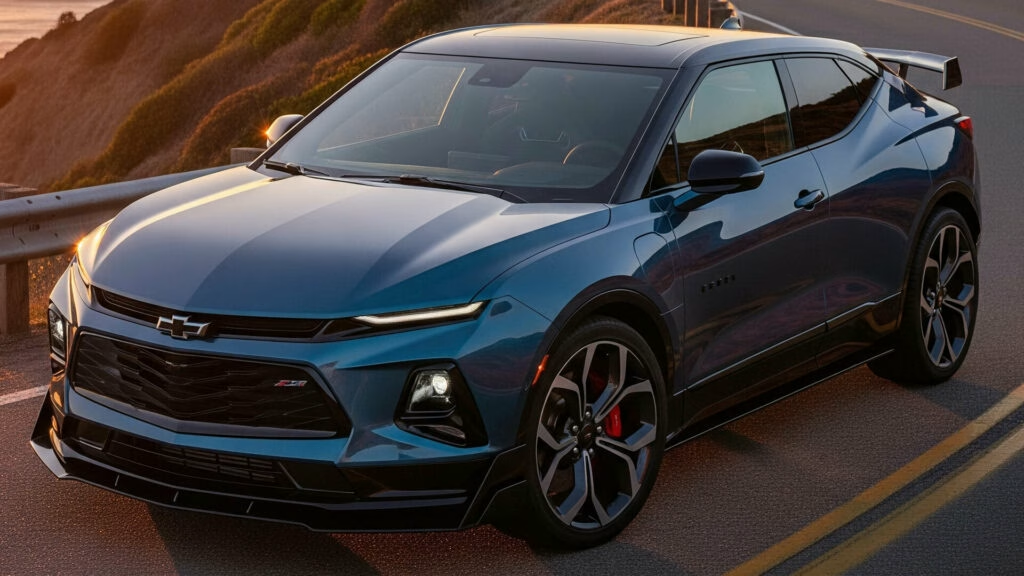Is Chevrolet Really Bringing Back the Camaro as an Electric Crossover?
Rumors are swirling, and if you’re a Camaro fan, you’ve probably heard the latest: Chevrolet might be reviving the iconic nameplate, but not as the muscle coupe you remember. Instead, the Camaro could return as a performance-focused electric crossover as soon as fall 2026. That’s a big pivot—so what’s driving this change, and how likely is it?
Why Would Chevy Turn the Camaro Into an EV Crossover?
Let’s face it: the auto industry is changing at breakneck speed. Electric vehicles are no longer a niche—they’re the future, with global EV sales topping 10 million units in 2023 according to the International Energy Agency. Chevrolet, like every major automaker, is under pressure to electrify its lineup and keep pace with shifting consumer tastes. The Ford Mustang Mach-E’s success showed there’s real appetite for performance EV crossovers with a familiar badge. Chevy’s move? Not so crazy after all.
But there’s another layer here. The sixth-generation Camaro bowed out with a promise from Chevy that it wasn’t the end of the story. Since then, rumors have ranged from a hybrid sedan to a full-on electric SUV. The crossover idea, while controversial, lines up with GM’s broader strategy—leveraging the Ultium EV platform and sharing components across models to keep costs in check and performance high.
How Would the Electric Camaro Stack Up Against Rivals Like the Mustang Mach-E?
If the reports are accurate, the Camaro EV crossover would go head-to-head with the Mustang Mach-E, but with a distinctly Chevy twist. Expect it to ride on GM’s Ultium platform, which already underpins the Blazer EV and Cadillac Lyriq. That means battery options in the 85 to 102 kWh range—enough for competitive range and performance.
Let’s talk numbers. The base rear-wheel-drive version could offer around 365 horsepower and 325 lb-ft of torque, while all-wheel-drive variants might push 300 horsepower and 355 lb-ft. That’s right in the sweet spot for sporty crossovers. For those who crave more, an SS trim could borrow the Blazer EV SS’s setup, delivering a punchy 615 horsepower and 650 lb-ft of torque. Not exactly subtle.
And then there’s the ZL1 rumor—a tri-motor monster with up to 1,000 horsepower, possibly using hardware from the GMC Hummer EV. If that happens, Chevy would be gunning for hypercar territory, not just pony car nostalgia. Imagine a family hauler that can out-accelerate most supercars. Wild, right?
What About the Camaro’s Legacy—Is This a Betrayal or Smart Evolution?
This is where things get heated. Purists might see an electric crossover Camaro as sacrilege. After all, the Camaro’s legacy is all about V8 thunder, rear-wheel drive, and that unmistakable coupe silhouette. But the market is speaking, and two-door sports cars are a shrinking slice of the pie. Crossovers, on the other hand, are everywhere.
Chevy’s not alone here. Ford took flak for the Mach-E, but it’s now one of the brand’s best-selling EVs. Dodge is electrifying the Charger. Even Porsche’s best-seller is the Cayenne SUV, not the 911. The Camaro name carries weight, and Chevy wants to keep it relevant for a new generation—one that values tech, practicality, and sustainability as much as straight-line speed.
Could There Be a Hybrid Sedan Instead?
Interestingly, some reports suggest Chevy might also be working on a sporty hybrid sedan, possibly arriving in 2028. This model could replace both the Camaro and Malibu, offering a more traditional four-door alternative with electrified power. That would give Chevy a two-pronged approach: a bold EV crossover for the mainstream and a hybrid sedan for those who want a bit more old-school flavor.
What’s the Real-World Impact for Drivers?
For most buyers, the shift to an electric Camaro crossover means more than just a new badge. Expect better everyday usability—roomier interiors, more cargo space, and the instant torque that makes EVs such a blast to drive. Charging infrastructure is improving, and with GM’s Ultium platform, range anxiety is becoming less of an issue.
Performance? Don’t worry. Electric motors deliver power instantly, and with rumored outputs north of 600 horsepower (and possibly up to 1,000 in the ZL1), this Camaro could embarrass plenty of gas-powered rivals at the stoplight. Plus, lower running costs and fewer emissions sweeten the deal.
The Big Takeaway for Camaro Fans and Curious Shoppers
The Camaro’s electric future is shaping up to be bold, divisive, and—if Chevy pulls it off—seriously exciting. Whether you’re a die-hard fan or just EV-curious, the message is clear: performance isn’t going anywhere, it’s just evolving. The big takeaway? Reinventing an icon like the Camaro isn’t about perfection—it’s about smarter adjustments. Start with one change this week, and you’ll likely spot the difference by month’s end.

